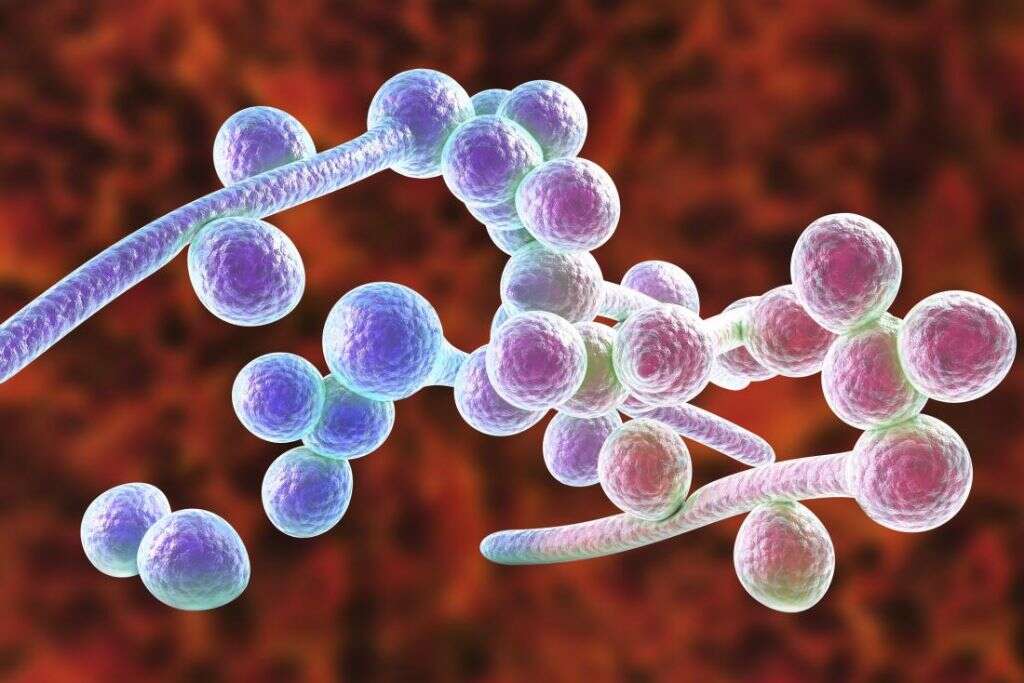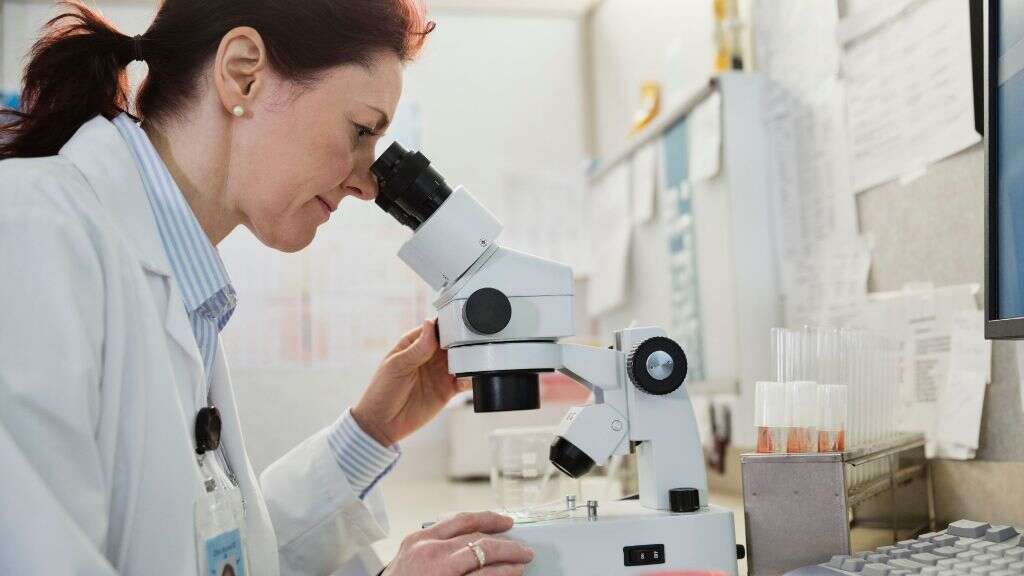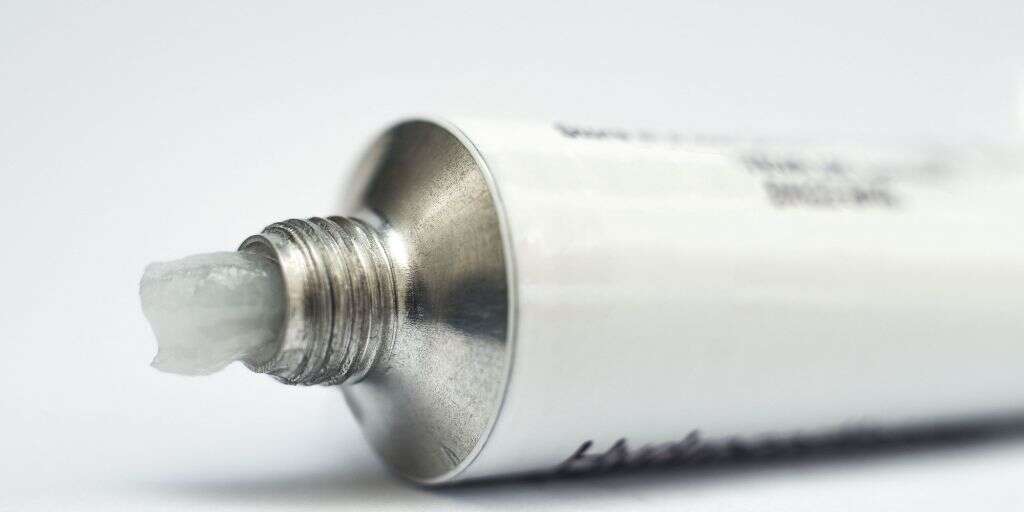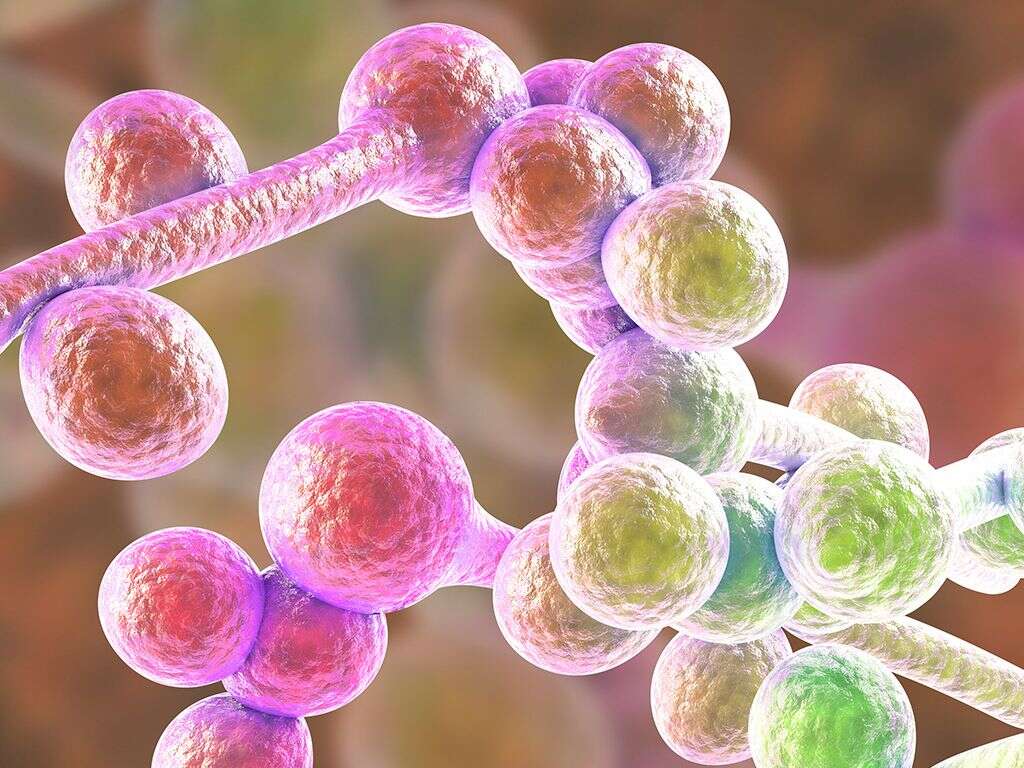What Is a Male Yeast Infection?
Yeast infections are among the most common medical annoyances, and they frequently affect women. However, it’s possible for men to develop yeast infections as well. Yeast infections primarily affect the outer reproductive organs but can spread to the interior portions of the reproductive organs as well.
Though male yeast infections are uncommon, they do still occur. For this reason, it’s important for men to be aware of what causes them, what symptoms they present, and available treatment options. In some cases, male yeast infections may go away even if left untreated. However, treatment can speed up the healing process and minimize unpleasant symptoms.

1. What Is a Male Yeast Infection?
A male yeast infection is a condition that commonly leads to inflammation of the head of the penis due to a certain type of fungus called candida. This fungus is normally present on the skin, but it can become overgrown in certain conditions and cause an infection to develop.
When a yeast infection only causes inflammation in the head of the penis, it is referred to as balanitis. This condition is more common in uncircumcised men but can occur in circumcised men as well. If left untreated, the yeast infection can spread to other nearby areas, including the inner thighs, scrotum and buttocks.

2. What Are Symptoms of a Male Yeast Infection?
Early symptoms of a male yeast infection include itchiness and a red rash that may create shiny patches of skin on the penis. A mild burning sensation and thick white substance around any penile folds of skin are also common symptoms of a male yeast infection that may still be in its beginning stages.
More advanced symptoms of a male yeast infection include severe itchiness, redness and pain inside the penis. Though these can be indications of a more advanced yeast infection, they can also indicate a sexually transmitted disease. For this reason, it’s important to visit your primary care doctor or urologist if you experience any of these symptoms.

3. How Common Are Male Yeast Infections?
Male yeast infections are generally not very common. However, some men may be more prone to them than others. In most cases, females are more susceptible to yeast infections simply because of the layout of their anatomy and because vaginal candidiasis is so common.
However, candida yeast can affect men’s reproductive organs as well. Candida yeast is responsible for as many as 35% of balanitis cases in men. Though male yeast infections are less common, they do happen and can cause significant discomfort and embarrassment.

4. What Are Risk Factors of Male Yeast Infections?
There are some risk factors associated with male yeast infections. They include having sexual intercourse with a partner who has a yeast infection, being uncircumcised, and failing to bathe frequently and properly. Using certain scented personal hygiene products may also increase your risk of developing a yeast infection.
Additional risk factors include having diabetes, using antibiotics for a prolonged period of time and being obese. Individuals who have HIV, or impaired immune systems for any reason, may be at higher risk of developing a yeast infection than healthy individuals with effective immune systems.

5. What Are Possible Complications of Male Yeast Infections?
It’s possible to develop serious complications as a result of an untreated male yeast infection. These include balanitis, which is inflammation of the head of the penis or the foreskin. If this condition isn’t treated, it could lead to scarring of the foreskin or adhesions on the penis. This can cause urination to be painful and difficult.
In other cases, a yeast infection can make its way to the bloodstream. This is known as invasive candidiasis and is more common in men who already have compromised immune systems. Candidiasis can be very serious and may require several weeks’ worth of oral antifungal medications.

6. How Can You Prevent a Male Yeast Infection?
There are things you can do to prevent a male yeast infection from developing. Wear a condom to reduce your likelihood of developing a yeast infection from a sexual partner, practice good hygiene and keep your genitals clean. If you are uncircumcised, it is very important to thoroughly clean your genitals, especially after sexual intercourse.
Another way to prevent male yeast infections is to practice sexual monogamy. This reduces your risk of contracting a yeast infection from multiple sexual partners.

7. How Long Does a Male Yeast Infection Last?
A male yeast infection may only last a few days or it can go on for a few weeks or longer. It’s more likely for a yeast infection to last longer if your sexual partner also has it. The good news is that once you treat an infection with antifungal medications, it typically clears up within just a week.
If you have a problem with recurring yeast infections, you may have an undiagnosed underlying health condition. Diabetes, for example, can increase your likelihood of developing yeast infections frequently. Speak with your doctor about your concerns and get a diagnosis.

8. How Is a Male Yeast Infection Diagnosed?
If you suspect you may have a yeast infection, it’s a good idea to schedule an appointment with your doctor. In some cases, a yeast infection can be diagnosed just by examining the affected area and reviewing any symptoms. In other cases, samples of the white substance on the penis may be collected and examined underneath a microscope to figure out what type of fungus is causing your problems.
If you are unable to visit your urologist or doctor, you may want to visit an urgent care doctor so that you can have the problem treated before complications arise.

9. How Is a Male Yeast Infection Treated?
If left alone, a male yeast infection may eventually go away on its own. On the flipside, it may become more severe without treatment and lead to other complications. It’s generally best to seek treatment for yeast infection symptoms while they are still somewhat mild. In many cases, topical antifungal creams and ointments can clear up infections in a matter of days. Many are available over the counter, though some require a prescription.
In cases of serious infections, doctors may prescribe hydrocortisone cream and prescription oral fluconazole. It’s important to take these products as directed for best results.

10. What Is the Outcome for a Male Yeast Infection?
In most cases, male yeast infections can be conquered easily with creams and ointments. In some cases, yeast infections may recur after they seem to be gone. If this happens, talk to your doctor. He or she may recommend weekly treatments that span across a period of several months.
If you are unable to use antifungal creams due to bad reactions, talk to your doctor. A medical professional may be able to recommend other treatment options.












